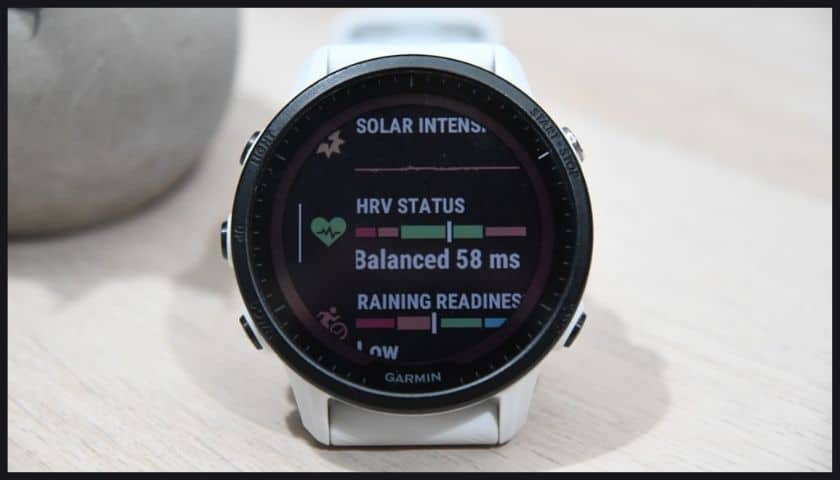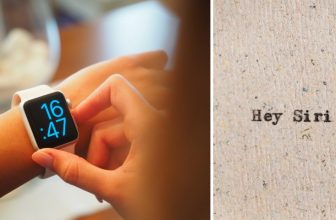How Does Garmin Measure Stress? [With Short Overview]

As an Amazon Associate, I earn from qualifying purchases.
Stress is our chronic anxiety, common human nature that prepares the individual to react quickly to whatever comes next. Unlike any acute heart disease, low-pressure, high-stress must be counteracted seriously.
Thanks to Garmin, they already manufactured well-established auto stress tracking features on their watch series. But how does Garmin measure stress? Have you ever wondered?
You would be. It’s pretty easy for Garmin to track your normal stress level. Because most devices have a built-in first-beat analytical algorithm with a special optical sensor, they can count your heartbeat and use them to examine your stress rating like a professional doctor.
How Does Garmin Measure Stress?
Garmin collects data from all-day activities, measures them, and re-collects them to gather them in one list.
This data will notify you from time to time, like a professional health provider. It is a feature that provides all sorts of stress tracking, such as HRV, muscle tension, sleep tracking, and many more.
To help you to manage stress, Garmin follows only 4 steps to track the user stress level ratings.
Step 1: Track Data by Detecting User’s Heartbeat
As soon as you wear your wristwatch, it takes data from you. Most of the Garmin wristwatches have a built-in first beat analytics engine. By this term, the watch is primarily used to combine HR and HV data.
Devices often have an optical heart rate sensor that records this information.
Step 2: Divided into Two Branches
After collecting data from users, Garmin divided them into two initial branches, including sympathetic and parasympathetic.
When you’re in stress, the watch encourages you to take a moment to relax.
Some wristwatches prompt the user to begin a breathing exercise to minimize stress.
Step 3: Produce Different Signals
A stress chart inside the watch continuously shows you some signals.
- It produces orange signals when the stress level is above 25.
- When the stress rating is below 25, it turns blue.
Again, the stress level also advises you to do some particular things. For instance,
- If your stress level is around 25, you’re in normal condition.
- At higher levels (25-100), it is a sympathetic activity that tells you to prepare for actions.
- At mid-level, stress (0-25) indicates your parasympathetic system. It is more active than the two actions.
Step 4: Re-collect All the Data
Lastly, Garmin re-collects all the data from the individual all-day activities and shows them as a graph. Also, give advice, hints, and some precautions to overcome them.
Where is the Stress Tracking Feature in Garmin Watches?
This is important to introduce before I get into how this watch tracks stress and how the overall procedures will be done. Stress tracking is one medical tool or feature founded by Garmin developers. They insert this on wristwatches so that users can see their health condition quickly.
Users can view their all-day stress tracking from the widget and in Garmin connect. Do the steps below to view them with Garmin connect app instructions.
Garmin Connect App Instructions for Mobile & IOS
- Open the App, and then go to the menu bar
- If you’re an Android user, select the top left button. For IOS, select the more button.
- Next, choose “Health states,” then tap “Stress.”
You can view your daily timeline, average time, and a daily breakdown of your stress values.
Garmin Connect App Instructions for Computer
You can reload, view, and average stress levels over time through computer access. To do this, follow these steps.
- Sign on to the Garmin Connect App from your personal computer
- From your left hand, click on the right and select the menu,
- Then tap on “Reports.”
- Select “health and fitness.”
- Finally, tap on “stress level.”
How To Analyse Your Stress Levels in Garmin Connect?
Garmin wristwatches are good enough to recognize one’s stress level. This wristwatch is technically manufactured with a special Heart Rate Variability (HRV) to analyse the user’s stress level.
HRV is a device sensor that detects and calculates your stress level. HRV measures the amount of time between the user and each heartbeat. It then counted down the overall beating time of the user and compared it to the previous database.
It may sound a little confusing to you, but no worries. Let me clear it up with a simple example. Suppose you used to go to table tennis practices from around 5.45 a.m. To 6.30 a.m.
At that time, Garmin’s stress level data could be high due to the high jump, walking, and running.
After that, your watch’s stress level might be either medium or low when you’re in your office at noon. In short, Garmin notes all the activities you do the entire day.
Then pre-record them and show them to you as a report at the end of the day. It will also instantly warm or notify you in case you are at risk of high stress.
Despite having amazing stress-counting features, it also has some limitations. The watch sometimes adds data from the period of intense physical activity.
However, you must wear the watch tight-knit to get accurate data. The more you wear it; the more accurate the stress rating will be.
- Important Note: Sometimes, the watch may show inaccurate or high-stress level ratings than expected. In this situation, ensure the watch fits your wrist appropriately. Yet, if it still shows unexpected exalted data, consult any nearest physician.
How Accurate is the Garmin Stress Level?
There are many opinions about Garmin watch stress level accuracy, which could be strong evidence of its accuracy.
Let’s discuss some evidence I searched to prove that Garmin’s stress counting process could be accurate.
1. Go to Depth in Human Autonomic Nervous System
Many Garmin experts say its stress level measurement is accurate and good. It’s because Garmin wrist watches use your heart rate data to determine the interval between each heartbeat. The stress counting process it follows is also unique.
Garmin devices can go deep inside the human body’s autonomic nervous system. The human autonomic system is a special organ that quarterbacks the time between each heartbeat. Garmin uses this to track and trace the entire activities of its user.
2. Lofty Of User Reviews Towards Its Accuracy
A user of Garmin Vivoactive 3 insists that it’s a complete nightmare and comfortable to use due to its accuracy and features.
Also, Garmin itself cleared the confusion by declaring highlighted signals where they include that it’s good to use personal cases. But the measurement it provides to users may vary and be different from the actual medical devices.
Another piece of evidence I found from Labfront’s Data Scientist team is by Dr. Francis Hsu and Dr. Han-Ping Huang.
They compared Garmin Vivo smart 4 and Polar H10 to detect the best way to provide accurate data. Both of them win, but the Garmin wristwatch for measuring stress levels is cozy and less noisy than other wristwatches.
3. First beat Analytical Algorithm
Garmin comes with unique traits called the First beat analytics algorithm. A feature like this helps the user to calculate heart rate variability. Actually, what does it do?
Well, first beat analytic measures your stress level and calculate your baseline heart rate when you’re inactive or sleeping.
If compared to other health monitoring wristwatches, Garmin is always different in its way. Therefore, it is enough to provide accurate data rates every time.
What Is a Good Stress Score on Garmin?
Garmin watches are not like other wristwatches. It is different from having so many benefits at a time. Stress is one of the biggest advantages anybody could enjoy.
Garmin measures the stress score on a particular scale. The highest stress level on the Garmin scale is around 0-100. Here, 0 represents the resting state, and 100 is high stress.
It calculates the overall stress level of the user for the day. This means the entire calculation of your stress reflects your activities and how much your brain takes. And it also gives you average data when your stress is so high or too low.
However, your Garmin wristwatch shows your stress level is between 0-25. Then, it is suggested you encounter a few challenges throughout the day.
Also, the stress scores between 35-40 are medium stress, which is good for a normal individual. But try to keep your stress as low as you can.
Do not allow it to rise below 25 since high stress could be the reason for many unexpected incidents and diseases.
What is A Bad Stress Score on Garmin?
Garmin stress tracker is completely accurate, as many users and spotters claim. As I mentioned, four different norms manually operate Garmin’s stress score.
This means the watch functions count your total stress level and provide you with data followed by four initial measurements.
Garmin’s stress score plays a crucial role, and you must have known them to understand your stress score and condition. In this regard, the stress level between 0 and 25 is a resting state.
Whereas 26 to 50 is low stress and 51 to 75 is medium stress. And 76-100 is high stress. Therefore, it is medium if your total stress level is around 35-60.
But, if your stress level is up to 89 or 100, it is a bad stress score. The individual must be taken care of by their high stress and immediately need to control it.
Frequently Asked Questions (FAQs)
Why Does My Garmin Say I Am Unproductive?
Garmin says you’re unproductive. That means your training load is good, but your fitness could be in better condition. Keeping your overall health in mind is very important. Although your body is struggling to recover, you must be aware of excessive stress, intake more nutrients, and take rest.
How Can I Manage Stress?
Manage your stress by maintaining different health procedures. Try to be productive all day long, doing yoga, cardio exercises, breathing exercises, eating healthy food, and getting plenty of sleep.
Take some home exercise to keep you stress-free. Avoid taking health-hazardous elements like excessive alcohol, tobacco, and substances.
What Is Garmin All-Day Stress Tracking?
Garmin’s all-day stress tracking is a health feature manufactured by Garmin. It will help you track all-day stress and alert you when you should remain stress-free. Users can monitor and get a prediction about their overall health condition through these functions.
What Factors Can Affect My Garmin Stress Score?
Garmin stress tracker will be able to track your stress level especially. This device has a stress level between 0 and 100, corresponding to the four basic scales.
But if you have high-performing exercises, training, lack of sleep, avoiding nutrients, food, and many external factors can affect your Garmin stress score.
Can Garmin Detect Anxiety?
Of course, Garmin can detect your anxiety through its amazing stress level features. It allows you to determine your stress level based on heart rate variability. Garmin watches use your heart rate data to detect the interval between each heartbeat.
Final Words
Now that you have learned how does Garmin measures stress, check your stress from time to time.
Remember that Garmin wristwatches won’t track data when it is not on your wrist. But your stress score will be higher when you are in a deep sleep. Your stress could be higher if you intake so much alcohol.
Alcohol is also unfortunate and acts as a curb to measure stress.
Therefore, I must advise you to avoid it. Wear the wristwatch tightly so that the watch can receive data accurately.
Lastly, you can’t eliminate stress from your life properly; this is why face it and minimize it through the help of Garmin watch breathing exercises.
As an Amazon Associate, I earn from qualifying purchases.
- 9 Best ABC (Altimeter, Barometer, Compass) Watches Of 2025 - July 5, 2023
- How to Get Rid of Watch Rash Instantly | Learn 7 Excellent Ways - June 2, 2023
- How to Set up And Use Apple Pay on Apple Watch to Pay Easily - May 17, 2023

![How Does Garmin Measure Stress? [With Short Overview]](https://pickedwatch.com/wp-content/uploads/2022/12/Why-Does-my-Apple-Watch-Keep-Pausing-my-Workout.jpg)
![How Does Garmin Measure Stress? [With Short Overview]](https://pickedwatch.com/wp-content/uploads/2022/12/Why-Does-My-Samsung-Watch-Keeps-Chiming.jpg)



